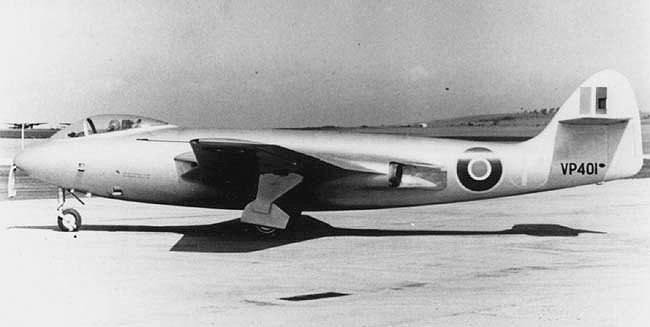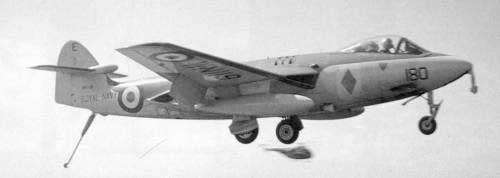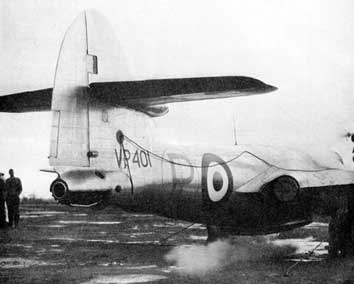

|
The Hawker P.1040 which would become known by the name "Seahawk" evolved from the P.1035 plan of November 1944 to fit a jet engine into the fuselage of the F.2 Fury, A month later a proposal to include bifurcated jet pipes exiting either side of the fuselage just behind the wing roots was approved and given the designation P.1040. In February 1945 a tender was submitted, but no Specification would be issued for many months, by October 1945 Hawker Aircraft issued a Production Order for one prototype (VP401) as a private venture.
|

In May 1946 a contract
for three prototype aircraft was received from the Navy Staff under
Specification N.7/46 for a fleet support fighter. The
P.1040's (VP401) first flight was on the 2/9/1947 at Boscombe Down,
with the first flight of a fully navalised version, (VP413) taking to
the air on the 3/10/1948. The "Seahawk" would be in front
line strength with the British Navy until 1960
|

|
In October 1945 Hawker submitted a design study (P.1047) for a swept back wing aircraft powered by a rocket engine. After talks with the Royal Airforce Establishment and the Ministry of Supply, a specification was issued E.38/46 for a swept wing version of the P.1040, with a contract being received by Hawker Aircraft for two aircraft to be known as the P.1052 in May 1947, the first flight being on the 19/11/1948. |
|
But that was not the end for the first prototype P.1040 (VP401), as in September 1949 it was refitted to house a Armstrong Siddeley Snarler rocket motor in the tail powered by a mix of liquid oxygen and water-methanol making a thrust of 2,000 lb The first flight being on the 20/11/1950 using the "Snarler" rocket motor, the aircraft made only six flights under the power of the rocket engine, on the last flight there was a small explosion, which caused some minor damage, this was repaired, but VP401 never took to the air again. |
 The
P.1072 The
P.1072 |